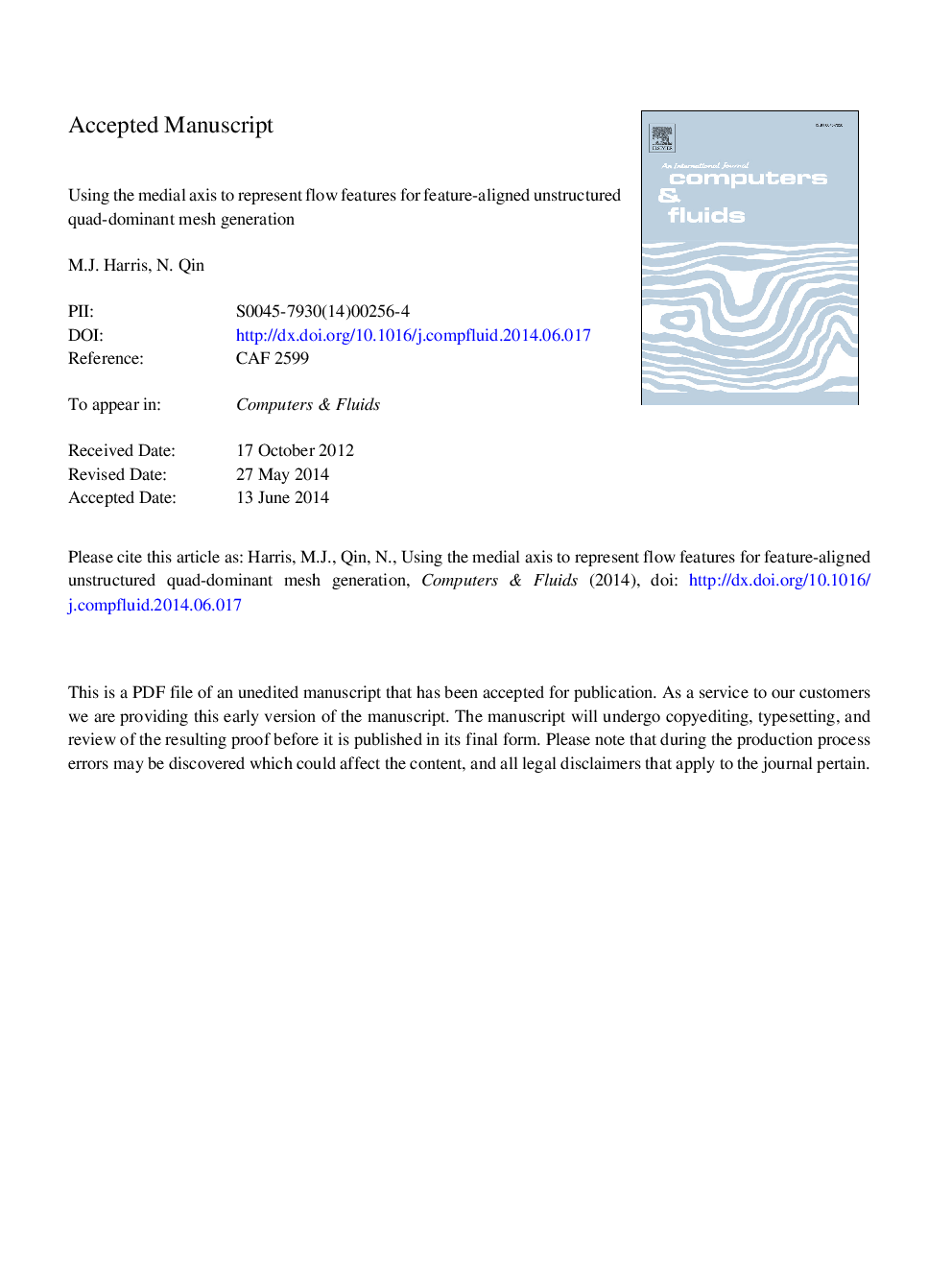| Article ID | Journal | Published Year | Pages | File Type |
|---|---|---|---|---|
| 7157100 | Computers & Fluids | 2014 | 62 Pages |
Abstract
A method to represent complex flow structures as geometric entities, using the medial axis for the purpose of generating flow feature-aligned meshes, is presented. The medial curves representing the flow features are embedded in the domain to guide mesh alignment and location of background sources, which influence element spacing and orientation when the mesh is regenerated. The resulting meshes possess regions of high-quality anisotropic quadrilateral elements locally aligned with the flow features. To further optimise the mesh based on the solution, a nodal movement adaptation scheme is applied which allows full alignment of the cell interfaces with the flow features, making the mesh more suitable for the one-dimensional approximate Riemann solvers and higher-order reconstruction schemes. The technique and its potential for improving the numerical simulation is presented for a range of test cases for the solution of the Euler and Navier-Stokes equations for compressible flows, which include shock waves, boundary layers and steady trailing wakes as the dominant flow features.
Keywords
Related Topics
Physical Sciences and Engineering
Engineering
Computational Mechanics
Authors
M.J. Harris, N. Qin,
